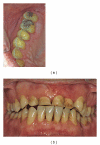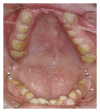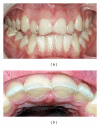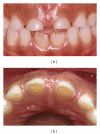Dental erosion and its growing importance in clinical practice: from past to present
- PMID: 22505907
- PMCID: PMC3312266
- DOI: 10.1155/2012/632907
Dental erosion and its growing importance in clinical practice: from past to present
Abstract
Since the mid-1990s, the focus of studies on tooth wear has steadily shifted from the general condition towards the more specific area of dental erosion; equally, a shift has occurred from studies in adults to those in children and adolescents. During this time, understanding of the condition has increased greatly. This paper attempts to provide a critical overview of the development of this body of knowledge, from earlier perceptions to the present. It is accepted that dental erosion has a multifactorial background, in which individual and lifestyle factors have great significance. Notwithstanding methodological differences across studies, data from many countries confirm that dental erosion is common in children and young people, and that, when present, it progresses rapidly. That the condition, and its ramifications, warrants serious consideration in clinical dentistry, is clear. It is important for the oral healthcare team to be able to recognize its early signs and symptoms and to understand its pathogenesis. Preventive strategies are essential ingredients in the management of patients with dental erosion. When necessary, treatment aimed at correcting or improving its effects might best be of a minimally invasive nature. Still, there remains a need for further research to forge better understanding of the subject.
Figures












References
-
- Johansson A. A cross-cultural study of occlusal tooth wear. Swedish Dental Journal. 1992;86:1–59. - PubMed
-
- Johansson AK. On dental erosion and associated factors. Swedish Dental Journal. 2002;(156):1–77. - PubMed
-
- Eliasson S, Richter S. Tooth wear in medieval icelanders. The XXth. Nordic Medical Congress, Program Abstracts, pp. 49, Abstract 32, 2005.
-
- Robb ND, Cruwys E, Smith BG. Regurgitation erosion as a possible cause of tooth wear in ancient British populations. Archives of Oral Biology. 1991;36(8):595–602. - PubMed
-
- Mair LH. Wear in dentistry—current terminology. Journal of Dentistry. 1992;20(3):140–144. - PubMed
LinkOut - more resources
Full Text Sources
Miscellaneous

